<Look familiar? Sounds al ot like spirochete + mycoplasma. These Spiroplasma travel in the same spiral drilling motion as spirochetes however hide their protein (identifying markers) from immune system etc by essentially turning inside out. Lyme Borrelia has been shown to turn itself inside out and form spheroplast or cystic form in a hostile environment - immune or antibiotics etc.>>
Interesting...
My decade of naivety to Borrelia Spirochete
Wednesday, September 16, 2009
Spiroplasma - Creutzfeldt-Jakob disease in Australia
 Look familiar? Sounds alot like spirochete + mycoplasma. TheseSpiroplasma
Look familiar? Sounds alot like spirochete + mycoplasma. TheseSpiroplasma These invasive pathogens are so dangerous that surgical equipment standard sterilization doesn't work so notification must be provided. They have not proved blood transfusion transmission yet...though infection has been confirmed from organ transplant studies.
Creutzfeldt-Jakob disease (looks like evolved lyme to me...and it comes from arthropod (incl ticks), insects and vertebrates, and seems to have similar vector life cycle patterns from what I gather. The 2009 Australian Health Report has implemented a strategy to help monitor this disease:
Creutzfeldt-Jakob disease (CJD) is a rare disease of the central nervous system, which results in death after a relatively rapid course of muscle weakness and dementia. There is no definitive diagnostic test and no known cure.
CJD occurs sporadically in the community with an incidence of one case per million population per year and may have a symptom free incubation period of more than 30 years. CJD is also known to have been transmitted as a result of certain medical interventions, such as human pituitary hormone treatment. This iatrogenic form is similar clinically to sporadically occurring CJD. The symptom free incubation period of this form of CJD ranges from 4 to 30 years with an average of 15 years based on international experience...
For more info visit: http://www.health.gov.au/internet/main/publishing.nsf/Content/health-pubhlth-strateg-phi-index.htm
Creutzfeldt–Jakob disease - From Wikipedia, the free encyclopedia
"Transmissible spongiform encephalopathies (TSEs, also known as prion diseases) are a group of progressive conditions that affect the brain and nervous system of many animals, including humans. According to the most widespread hypothesis they are transmitted by prions, though some other data suggest an involvement of a Spiroplasma infection.[1] Mental and physical abilities deteriorate and myriad tiny holes appear in the cortex causing it to appear like a sponge (hence 'spongiform') when brain tissue obtained at autopsy is examined under a microscope. The disorders cause impairment of brain function, including memory changes, personality changes and problems with movement that worsen over time. Prion diseases of humans include classic Creutzfeldt-Jakob disease, new variant Creutzfeldt-Jakob disease (a human disorder related to mad cow disease), Gerstmann-Sträussler-Scheinker syndrome, fatal familial insomnia and kuru. These conditions form a spectrum of diseases with overlapping signs and symptoms..."
Labels: Arthritis, Australia, Autoimmune, Bacteria, Bite, Blog, Blood Transmission, Borrelia,Borreliosis, Disease, Epidemic, Illness, Lupus, Lyme, MS, Rash, Spirochete, STD, Tick, Ticks
Subscribe to: Post Comments (Atom)
AUSTRALIAN LYME LINKS
- "LYME GREEN AUSTRALIA" - recent blogs HERE
- AMA advise Dr's Lyme Disease is in Australia
- Animation Video - Lyme Disease
- AussieLyme Support Group
- Australia Tick Alert (TAGS Inc.)
- Borrelia Spirochaetes in blood of cattle, rodents, kangaroos, & bandicoots - MJ Mackerras
- Does Lyme Borreliosis Exist in Australia?
- Epidemiology & occurrence of human intestinal spirochaetes in Western Australia - Celia Josephine Brooke (2003)
- GWI & Infection (Mycoplasma, Lyme) Study (incl. Australia War Vets) - Prof Garth Nicolson (Newcastle)
- Insect bite & rash from Australia disables Mike Gregory (Wigan coach 2004 Challenge Cup)
- Lizards carry ticks - Western Australia (Dumbleyung)
- LYME a growing problem in Europe, Africa, AUSTRALIA, Asia and in America.
- Lyme Disease in Australia - Encyclopedia Britannica
- Lyme Disease in Australia - Sylvia Clare (Oct 2009)
- Lyme Friends Network - LymeOz
- Lyme Risk Management deemed not warrented to import Rodents to Zoos in Australia - CSIRO Australian Biosecurities (2008-10)
Blog Archive
LYME RESOURCE LINKS
- Sarcoidosis Presentation in Kazan
-Sarcoidosis Presentation in Kazan On May 13, 2013, Professor Trevor Marshall spoke about Sarcoidosis at the Kazan State Medical University -- as part of ...
3 days ago - Doctors Change Treatment Recommendations For Lyme Disease ~ 2012-09-25
- Doctors Change Treatment Recommendations For Lyme Disease ~ 2012-09-25 Doctors are saying don't wait -- treat -- because sometimes it can take a while to...
1 week ago - 2013-05-17 ~ Ticks and Lyme disease
-2013-05-17 ~ Ticks and Lyme disease Lyme disease dangers. As aired on CBC's The National on May 17, 2013 ~ Property of Canadian Broadcasting Corporation ...
1 week ago - Mysteria bugs
- In the past I talked about mystery bugs -- I know a few things I didn't before. One researcher at NIH, still unpublished, came upon the issue through sere...
2 weeks ago - How Autoimmune and Chronic Diseases Can Accelerate Aging
- How Autoimmune and Chronic Diseases Can Accelerate Aging For more information, visit http://www.envita.com/ Suffering from diseases like fibromyalgia, ch...
5 weeks ago - Custom Probiotics at 15% off…
- One of my favorite probiotic companies is having a 15% off sale this month… if you haven’t used their products before, I suggest you try them. http://campa...
1 month ago - Triggering OspC production in Borrelia burgdorferi during tick feeding: Is temperature the real signal?
- The *Ixodes* tick, the vector of the Lyme disease spirochete, goes months without a meal. During this time, the *Borrelia burgdorferi* spirochetes living ...
2 months ago - FDA's Dr Robert Temple on 'Breakthrough Therapies'
- FDA's Dr Robert Temple on 'Breakthrough Therapies' On November 14, 2012, Dr Robert Temple, the Deputy Center Director for Clinical Science at FDA's Cente...
5 months ago - Learned Through Experience
- Wow it's been a while since I posted! Guess life has been busy!! Yes it has and that's a positive note! I have pretty much weaned myself from majority of m...
8 months ago - "A Functional Approach to Lyme Disease" with Dr. Nikolas Hedberg, DC, DABCI
- "A Functional Approach to Lyme Disease" with Dr. Nikolas Hedberg, DC, DABCI Lyme disease is a bacterial infection that can have devastating effects on th...
1 year ago - Persistence of the Organism is Well-Accepted
- From Steven Barthold, professor in the Department of Pathology, UC-Davis, and published researcher in veterinary science: We've been working with looking ...
1 year ago - IDSA aims to censor UNDER OUR SKIN TV broadcasts
- Open Eye Pictures has recently learned that the Infectious Diseases Society of America (IDSA) has been trying to stop the television broadcast of its award...
2 years ago - Elsie's Gumbo
- I spent my last year of high school in southeastern Louisiana. This area is an amazing microcosm unlike any other part of our nation. It's an island of c...
2 years ago - Demencia Urbana Desahogo*
- Demencia Urbana Desahogo* ESTE ROLON VIEN FAMOSO' QUIEN NO LA A ESCUCHADO EN REAL VANDALS JEJE BUENO ESPERO LES GUSTE SUERTE From: Ivan Dominguez Views: ...
3 years ago - Is Lymes disease Genetic?
- Did you know that you could avoid Lyme disease by taking some simple measures? Check it out! Scientists are discussing the issue of whether Lyme disease is...
4 years ago - Happy Solstice
- We put up our tree on Sunday. The sun seems to have taken the hint and is returning on schedule. Sorry I haven't been around lately. I just completed the ...
4 years ago - Lyme Disease Digital Library Blog
- from the library desk, April 20, 2008 I am very proud to launch the first phase of the Lymebrary, a project of the Lyme Disease Digital Libra...
5 years ago - Interview with Nadya Markova: L-form Expert
- “Bacterial L-forms are among the most unusual creatures in nature. Once one has seen their strange habits and life style, one starts to work on L-forms wit...
5 years ago - No vaccine given in Oz, so no false positives...why follow Americas two tiered exclusionary testing?-
About Me
- LYME GREEN AUSTRALIA
- I am involved in fighting LYME DISEASE & other tick-borne co-infections. I am a 29 y/o Australian, never traveled overseas. Tick bite gave me a bulls-eye rash, arthritis, & a cascade of seemingly unrelated symptoms. Over a decade misdiagnosed and unaware of Lyme Disease epidemic in Australia which is currently denied by the Governments and their agencies, resulting in poor access to inaccurate tests, while simultaneously demanding patient data to change policy to fund treatment for sufferers, yet denying positive tests from international blood labs. I hope that others gain awareness from my experiences. After a year on appropriate Chronic Lyme treatment, I am now getting my life back! "Spontaneous, energetic and innovative lateral thinker...Constantly questioning and seeking ways to improve whatever am involved in." ENTP personality type using Jung–Myers–Briggs instrument (McGuiness 2004).








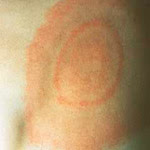
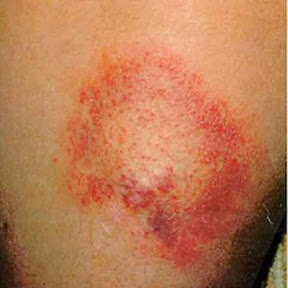

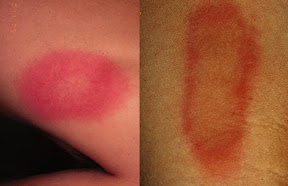

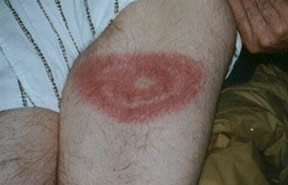

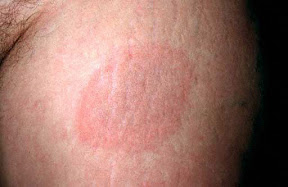
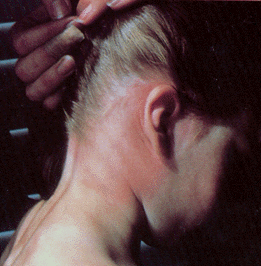



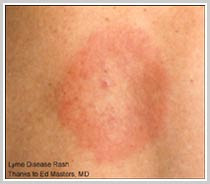



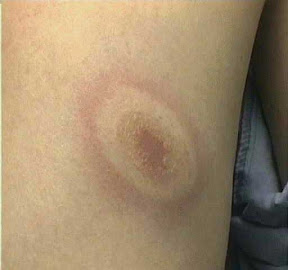
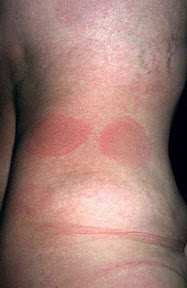






by: Scott, Donald W., M.Sc.